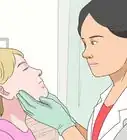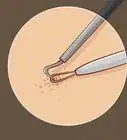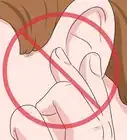This article was co-authored by Margareth Pierre-Louis, MD. Dr. Margareth Pierre-Louis is a board certified Dermatologist and Dermatopathologist, Physician Entrepreneur, and the Founder of Twin Cities Dermatology Center and Equation Skin Care in Minneapolis, Minnesota. Twin Cities Dermatology Center is a comprehensive dermatology clinic treating patients of all ages through clinical dermatology, cosmetic dermatology, and telemedicine. Equation Skin Care was created to provide the best in evidence-based, natural skin care products. Dr. Pierre-Louis earned a BS in Biology and an MBA from Duke University, an MD from the University of North Carolina at Chapel Hill, completed a residency in dermatology at the University of Minnesota, and completed a dermatopathology fellowship at Washington University in St Louis. Dr. Pierre-Louis is board certified in dermatology, cutaneous surgery, and dermatopathology by the American Boards of Dermatology and Pathology.
There are 16 references cited in this article, which can be found at the bottom of the page.
wikiHow marks an article as reader-approved once it receives enough positive feedback. In this case, 100% of readers who voted found the article helpful, earning it our reader-approved status.
This article has been viewed 782,599 times.
Whiteheads are a form of acne that typically appears on the skin as small, round, white bumps. This type of acne is caused when skin oil secretions and dead skin cells clog the pore area and block the pore opening. Whiteheads are known to dermatologists as "closed comedo" acne because they block pores (unlike blackheads, which keep pores open). Like other forms of acne, whiteheads can usually be effectively treated at home.
Steps
Treating Whiteheads at Home
-
1Wash the affected area gently twice a day using a mild cleanser. Washing too frequently, rubbing the skin too vigorously, or using too abrasive facial masks can make acne worse.
-
2Apply over-the-counter acne treatment products that contain benzoyl peroxide and salicylic acid. It's important to wait 5-15 minutes after you cleanse your skin before applying any topical acne medication. If you apply the medication immediately after washing your face, it may actually irritate the skin and result in whiteheads.
- Benzoyl peroxide destroys the bacteria found in the pores when acne is present.[1] It is included in a wide range of products, including face washes, lotions, and ointments. Be careful when applying, as it can stain or remove color from your clothes.[2]
- Salicylic acid helps the skin shed dead cells, which helps open pores. It also dries up the excess oil that causes whiteheads. Because it is an acid, it may cause some tingling when you apply it.[3]
- With either of these medications, stop using them and contact a dermatologist if you experience any of the following: skin rash or intense itching, blisters, redness, or swelling.
- Don't over apply! Applying more than the recommended dose of these medicines not only won't clear your skin faster, it can actually irritate your skin and cause redness, inflammation, and more whiteheads.
Advertisement -
3Apply tea tree oil to the skin to fight whiteheads naturally. Use a product containing at least 5% tea tree oil. Saturate a cotton ball with the oil and dab it on the affected area once a day. (If you use 100% pure tea tree oil, make sure to dilute it, otherwise you will end up irritating the skin.) Although it may take longer to work (approximately three months), studies have shown that tea tree oil is as effective over time at fighting inflammation as benzoyl peroxide but has fewer side effects.[4]
- If you have eczema or another skin condition, tea tree oil may further irritate your skin. Do not swallow tea tree oil as it is toxic when consumed.[5]
- For slightly faster results, apply tea tree oil to skin twice a day for 20 minutes each time, then wash off with gentle cleanser. Continue this regimen for 45 days.[6]
-
4Give the medication time to work. Despite claims to the contrary, skin-clearing products don't work overnight. It can take 6-8 weeks to see improvement, and up to 6 months to get really clear skin. Be patient and keep up your skincare regimen.
Getting Professional Help
-
1Understand what causes whiteheads. Whiteheads are small, white bumps on the surface of the skin. They are usually the least severe type of acne, but may also occur alongside other types. Whiteheads and other acne breakouts can have a variety of causes. Understanding how whiteheads form can help you decide on treatment.
- Hormonal changes in the body, such as those that occur during puberty, pregnancy, and menopause, can cause breakouts. Nearly 85% of people between the ages of 12 and 24 develop acne of some sort. Changes in medication such as hormonal birth control and certain psychiatric drugs can also trigger a breakout.
- Excessive sebum production contributes to whiteheads and other types of acne. Sebum is an oily substance produced in hair follicles that can cause whiteheads and other acne breakouts when too much is absorbed by your skin. Most of the hair follicles on your body produce sebum, so it is possible to get whiteheads on other areas of your skin besides your face.
- Some people are more genetically likely to develop whiteheads. White people are more likely than people of other races to develop whiteheads and other acne, and the tendency to get whiteheads can also be passed down in families.
- Whiteheads have many causes, not all of which you can treat on your own. If your skin does not respond to at-home treatments, it's best to see a doctor even if your condition isn't severe. You may have other underlying health issues that are contributing to your whiteheads.
-
2Examine your skin. If you've been treating your whiteheads at home and haven't seen improvement after 4-8 weeks of using topical medication, it is probably time to reassess your situation. The American Academy of Dermatology has an online guide to help you understand your acne symptoms, but this should not replace professional advice.
-
3Visit your general practitioner. If your whiteheads are severe or do not respond to home treatment methods, your general practitioner can prescribe both oral and topical prescriptions that are stronger than over-the-counter medications. These usually work in a few weeks. If your whiteheads continue to be a problem, talk to your physician about getting a referral to see a dermatologist.
- Your general practitioner can prescribe medications that also include antibiotics to decrease the presence and growth of acne-causing bacteria (P. acnes) on your skin. Some common oral antibiotics include erythromycin, tetracycline and derivatives, and (for women) oral contraceptives. Your doctor may also prescribe topical antimicrobials such as benzoyl peroxide or azelaic acid.
- Some health insurance programs in the US require a physician's referral for you to see a dermatologist, and dermatologists are usually more expensive than visiting your general practitioner. To avoid surprise costs, check with your health insurance provider before scheduling a visit.
-
4Talk to your doctor about topical retinoids.[7] Topical retinoids are derived from vitamin A and unclog pores, which helps to clear whiteheads and prevent them from recurring. Minor side effects like skin irritation may occur, and some of them (such as tazarotene) should not be taken by pregnant women..
- Some over-the-counter skin creams contain retinoids, but your doctor can prescribe prescription-strength topical medications that are specifically for fighting whiteheads and other acne. It’s best to seek a physician’s advice.
-
5See a dermatologist. If your whiteheads do not respond to at-home or general prescription treatments, you will need to visit a dermatologist. You should also visit a dermatologist if you find acne nodules or cysts. Nodules are hard, raised bumps under the skin, and cysts are blocked pores that are usually large, red, and sore to the touch.[8] Both can cause permanent scarring if left untreated by a professional.
- A dermatologist has many treatment options that are not available for at-home treatment. In addition to topical and oral medications, your dermatologist may recommend laser treatments, chemical peels, or even surgical procedures, depending on the severity of your acne problem.[9]
-
6Ask your dermatologist about comedo extraction. Your dermatologist can physically remove whiteheads and blackheads using a sterile extraction device to dislodge the material clogging the pores. They may also provide a microdermabrasion peel to help remove dead skin and open smaller clogged pores.[10]
- You should never try to remove whiteheads on your own. Squeezing, picking, popping, or using an at-home extraction device on your own can worsen your whitehead problem because it may force the contents of the whitehead further into the skin. Attempting to extract whiteheads at home can also cause serious infection and result in permanent scarring.
-
7Ask your dermatologist about isotretinoin. Isotretinoin is a prescription medication that works by reducing your body’s production of facial oil (sebum), one of the substances responsible for clogged pores that cause whiteheads.[11] It also reduces inflammation and the presence of the skin bacteria P. acnes.[12] In about 85% of patients with severe acne, isotretinoin treatments produce permanently clear skin in 4 to 5 months.
- Isotretinoin goes by the brand names Absorica®, Accutane®, Amnesteem®, Claravis®, Myorisan®, Sotret®, and Zenatane™. It is also available in generic form and is usually administered orally.[13]
- Isotretinoin has some possible severe side effects, such as the development of inflammatory bowel disease or psychiatric disturbance, that present potential risks. It is likely only to be prescribed in severe cases.[14]
- Because of the severity of some side effects, people who are prescribed isotretinoin must enroll in the ipledge™ program created by the FDA. Among other things, women who take isotretinoin must not become pregnant, and they should not begin isotretinoin treatments while pregnant. People taking isotretinoin should also not donate blood while being treated and should stay out of the sun.[15]
-
8Remember that whitehead treatments take time to work, and maintenance is required. Even oral and topical whitehead treatments prescribed by a medical professional take time to work. Comedo extraction is faster, but also rather expensive. In all cases, you will need to continue to maintain your treatments in order to keep your skin clear.
Preventing Whitehead Breakouts
-
1Wash skin gently. Scrubbing, especially with an "exfoliating" sponge or washcloth, can actually make your whitehead problem worse because it irritates your skin. The American Academy of Dermatology recommends that you just use your fingertips and wash with a gentle, non-abrasive cleaner.[16] Massaging the soap into your skin with your fingers will still provide a deep clean.
-
2Be aware of certain skincare products. Skincare products such as astringents, certain masks and toners, and exfoliating soaps can actually irritate your skin and make it more prone to developing whiteheads.[17]
- Applying rubbing alcohol can also irritate your skin and cause whiteheads to develop.
- Skincare products that contain certain oils are also not a good idea if you have acne-prone skin. Many cosmetics and sunblock lotions contain oil that can clog pores and lead to whiteheads.
- These are the oils you should avoid if you have oily or acne-prone skin: fractionated coconut oil, Cocoa butter, Sesame oil, Wheat germ oil, Shea butter, Sea buckthorn oil, Other oils
- Several oils are high in “oleic” fatty acids, which are believed to cause more clogged pores than those high in “linoleic” fatty acids. Since oily skin is believed to be low in linoleic fatty acids, oils with more of these typically work well, while those with more “oleic” acid may cause more issues. Based on this theory, some to avoid include olive, avocado, apricot kernel, and sweet almond oil. Meanwhile, some oils that are great for oily skin include grapeseed, rosehip, evening primrose, hemp, and pumpkin seed oil.
- Avoid heavy foundations and cream cosmetics if possible. These tend to be the worst culprits for blocking pores.
-
3Apply topical medications before makeup. Oil-free makeup is better for your skin than the oily stuff, but it can still cause trouble if it blocks your acne medications from working. Apply your medications first, then your makeup, for the best effect.
-
4Keep oily things away from your face. Do not touch or pick at your face (your fingers have natural skin oils and bacteria on them that can cause breakouts).
-
5Avoid picking or popping whiteheads.[18] While it can be hard to resist wanting to eliminate whiteheads by picking or popping them, doing so can actually further inflame the skin, make the whitehead problem worse, potentially cause infection, and delay skin healing. Keep your fingers away!
-
6Purchase blotting paper. You can find oil-absorbent blotting paper at many pharmacies and beauty supply stores. If you have very oily skin, using blotting paper can help absorb some of the excess oil without causing irritation.
-
7Stay out of the sun. Tanning beds and laying out to tan are popular, but they're not good news for your skin. Using tanning beds can increase your risk of skin cancer by 75 percent. In addition, certain acne medications make your skin more sensitive to sunlight, which can increase skin damage if you tan.[19]
-
8Continue your skincare regimen. It might be tempting to stop using topical acne medications once they've done their job. Dermatologists recommend that you continue using at least one topical medication even after your skin clears to prevent further breakouts. Remember: an ounce of prevention is worth a pound of cure!
Expert Q&A
-
QuestionWhat is the main cause of whiteheads on the face?
 Aanand Geria, MDDr. Aanand Geria is a board certified dermatologist, a clinical instructor at Mt. Sinai, and the owner of Geria Dermatology based in Rutherford, New Jersey. Dr. Geria's work has been featured in Allure, The Zoe Report, NewBeauty, and Fashionista, and he has peer-reviewed work for the Journal of Drugs in Dermatology, Cutis, and Seminars in Cutaneous Medicine and Surgery. He holds a BS from the Penn State University and an MD from Rutgers New Jersey Medical School. Dr. Geria then finished an internship at Lehigh Valley Health Network and a dermatology residency at the Howard University College of Medicine.
Aanand Geria, MDDr. Aanand Geria is a board certified dermatologist, a clinical instructor at Mt. Sinai, and the owner of Geria Dermatology based in Rutherford, New Jersey. Dr. Geria's work has been featured in Allure, The Zoe Report, NewBeauty, and Fashionista, and he has peer-reviewed work for the Journal of Drugs in Dermatology, Cutis, and Seminars in Cutaneous Medicine and Surgery. He holds a BS from the Penn State University and an MD from Rutgers New Jersey Medical School. Dr. Geria then finished an internship at Lehigh Valley Health Network and a dermatology residency at the Howard University College of Medicine.
Board Certified Dermatologist
-
QuestionShould I squeeze at whiteheads on my face?
 Margareth Pierre-Louis, MDDr. Margareth Pierre-Louis is a board certified Dermatologist and Dermatopathologist, Physician Entrepreneur, and the Founder of Twin Cities Dermatology Center and Equation Skin Care in Minneapolis, Minnesota. Twin Cities Dermatology Center is a comprehensive dermatology clinic treating patients of all ages through clinical dermatology, cosmetic dermatology, and telemedicine. Equation Skin Care was created to provide the best in evidence-based, natural skin care products. Dr. Pierre-Louis earned a BS in Biology and an MBA from Duke University, an MD from the University of North Carolina at Chapel Hill, completed a residency in dermatology at the University of Minnesota, and completed a dermatopathology fellowship at Washington University in St Louis. Dr. Pierre-Louis is board certified in dermatology, cutaneous surgery, and dermatopathology by the American Boards of Dermatology and Pathology.
Margareth Pierre-Louis, MDDr. Margareth Pierre-Louis is a board certified Dermatologist and Dermatopathologist, Physician Entrepreneur, and the Founder of Twin Cities Dermatology Center and Equation Skin Care in Minneapolis, Minnesota. Twin Cities Dermatology Center is a comprehensive dermatology clinic treating patients of all ages through clinical dermatology, cosmetic dermatology, and telemedicine. Equation Skin Care was created to provide the best in evidence-based, natural skin care products. Dr. Pierre-Louis earned a BS in Biology and an MBA from Duke University, an MD from the University of North Carolina at Chapel Hill, completed a residency in dermatology at the University of Minnesota, and completed a dermatopathology fellowship at Washington University in St Louis. Dr. Pierre-Louis is board certified in dermatology, cutaneous surgery, and dermatopathology by the American Boards of Dermatology and Pathology.
Board Certified Dermatologist Avoid picking at any whiteheads that you get since it could lead to scarring later on.
Avoid picking at any whiteheads that you get since it could lead to scarring later on.
Warnings
- Do not use skincare systems that encourage the use of alcohol-based products such as astringents and toners. Even if they're expensive and claim to work miracles, these skincare regimens can inflame your skin and cause whitehead breakouts.⧼thumbs_response⧽
- Cost has very little to do with quality. When purchasing topical acne medications, look for the concentration of benzoyl peroxide and salicylic acid: according to FDA regulations, for over-the-counter medications the benzoyl peroxide concentration should be between 2.5% and 10%, and the salicylic acid concentration should be between 0.5% and 2%.[20] Any medication that contains these elements in recommended concentrations will work on whiteheads. It's unnecessary to pay extra money for fancy brands.⧼thumbs_response⧽
- Never attempt to extract whiteheads at home. Picking, squeezing, popping, or using an over-the-counter extraction tool on your whiteheads can create further whitehead problems, cause severe infections (including staph infections), and result in permanent skin damage and scarring.⧼thumbs_response⧽
References
- ↑ http://www.webmd.com/skin-problems-and-treatments/acne/tc/acne-treatment-with-benzoyl-peroxide-topic-overview
- ↑ https://www.aad.org/dermatology-a-to-z/for-kids/about-skin/acne-pimples-and-zits/treating-pimples
- ↑ http://www.webmd.com/skin-problems-and-treatments/acne/tc/acne-treatment-with-salicylic-acid-topic-overview
- ↑ http://www.ncbi.nlm.nih.gov/pubmed/2145499
- ↑ http://www.mayoclinic.org/drugs-supplements/tea-tree-oil/background/hrb-20060086
- ↑ http://www.mayoclinic.org/drugs-supplements/tea-tree-oil/dosing/hrb-20060086
- ↑ Margareth Pierre-Louis, MD. Board Certified Dermatologist. Expert Interview. 15 May 2020.
- ↑ https://www.aad.org/dermatology-a-to-z/diseases-and-treatments/a---d/acne/signs-symptoms
- ↑ https://www.aad.org/dermatology-a-to-z/diseases-and-treatments/a---d/acne/diagnosis-treatment
- ↑ http://www.aocd.org/?page=Acne
- ↑ http://www.webmd.com/drugs/2/drug-6662/isotretinoin-oral/details
- ↑ https://www.aad.org/dermatology-a-to-z/diseases-and-treatments/i---l/isotretinoin/questions-patients-ask
- ↑ http://www.webmd.com/drugs/2/drug-6662/isotretinoin-oral/details
- ↑ https://www.aad.org/Forms/Policies/Uploads/PS/PS-Isotretinoin.pdf
- ↑ https://www.aad.org/dermatology-a-to-z/diseases-and-treatments/i---l/isotretinoin/questions-patients-ask
- ↑ https://www.aad.org/dermatology-a-to-z/diseases-and-treatments/a---d/acne/tips
- ↑ Margareth Pierre-Louis, MD. Board Certified Dermatologist. Expert Interview. 15 May 2020.
- ↑ Margareth Pierre-Louis, MD. Board Certified Dermatologist. Expert Interview. 15 May 2020.
- ↑ https://www.aad.org/dermatology-a-to-z/diseases-and-treatments/a---d/acne/tips
- ↑ http://www.fda.gov/downloads/Drugs/Guidances/UCM259744.pdf
- Videos provided by Jennifer Chiu
About This Article
To treat whiteheads, wash the affected area twice a day with a mild cleanser, since using stronger products can make it worse. Wait 5 to 15 minutes after you’ve cleaned your skin, then apply an over-the-counter acne treatment containing benzoyl peroxide and salicylic acid. If you’d rather take a natural approach, rub on a product containing at least 5 percent tea tree oil with a cotton swab twice a day. Leave the oil on your skin for 20 minutes before washing it off. Remember that skin treatments can take up to 4 to 6 weeks to clear up the whiteheads. If they don’t respond to home treatment within this timeframe, make an appointment with your doctor so they can prescribe medication, such as antibiotics, that will reduce acne-causing bacteria. For tips on how to prevent whiteheads from developing, keep reading!
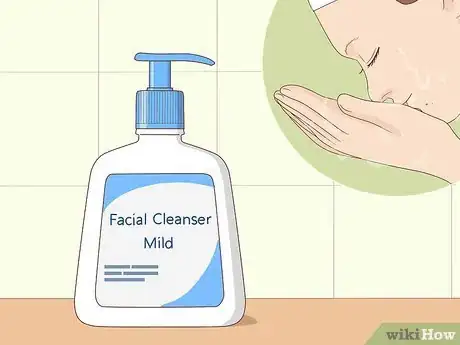
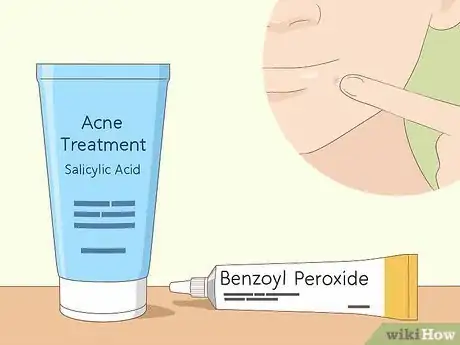
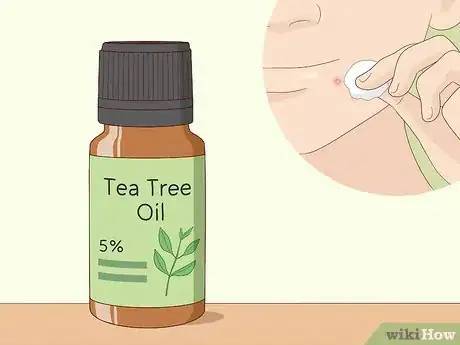
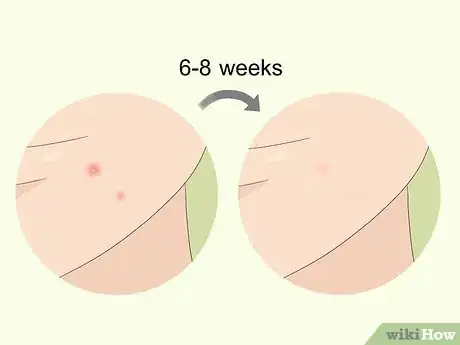
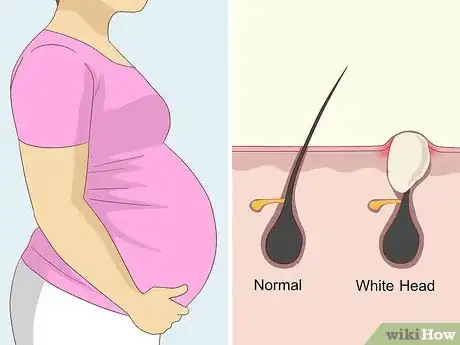
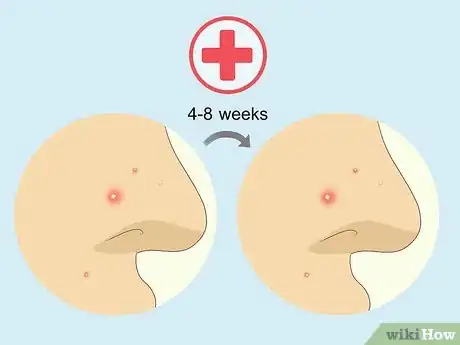
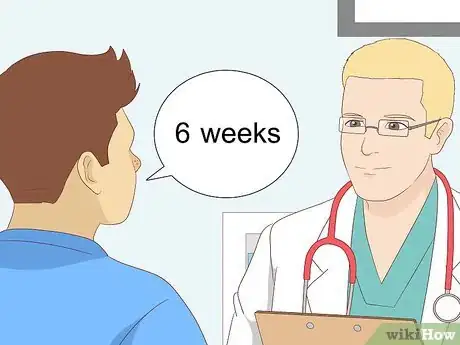
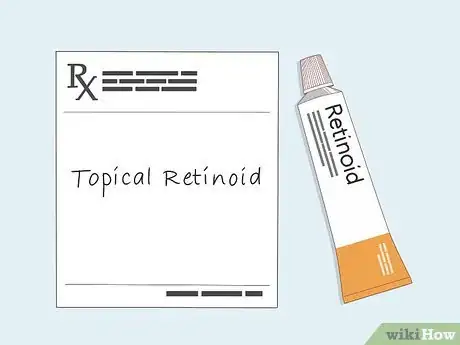

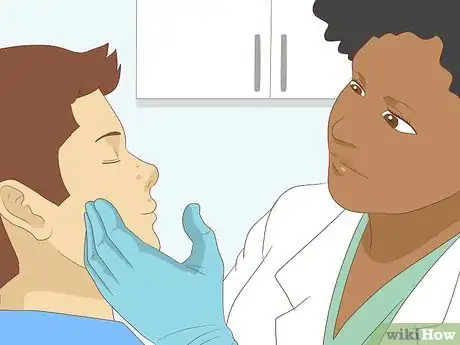
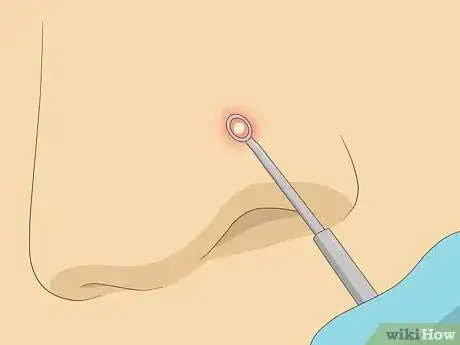
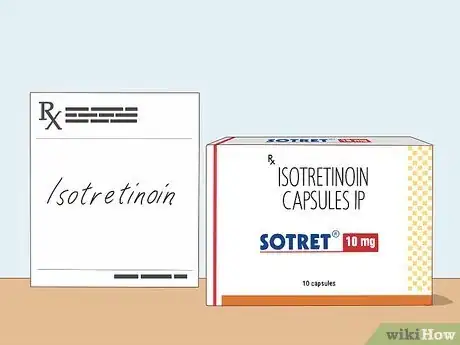
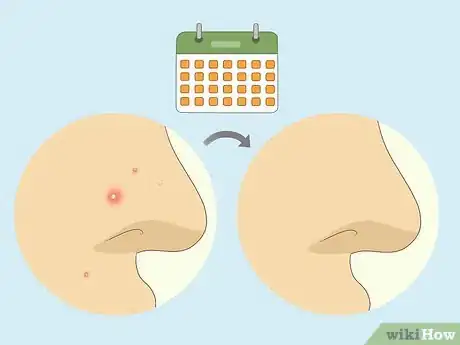
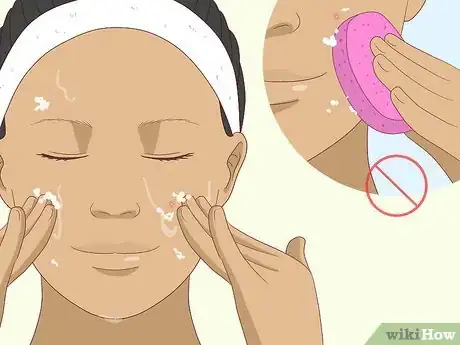
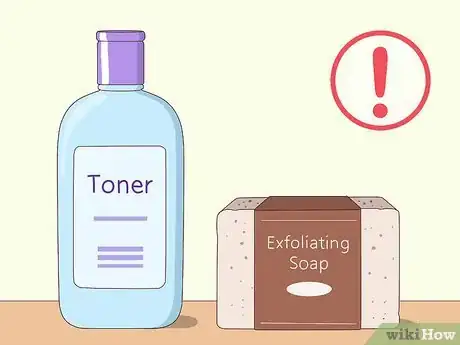
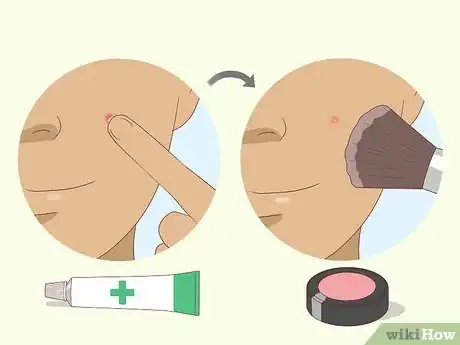
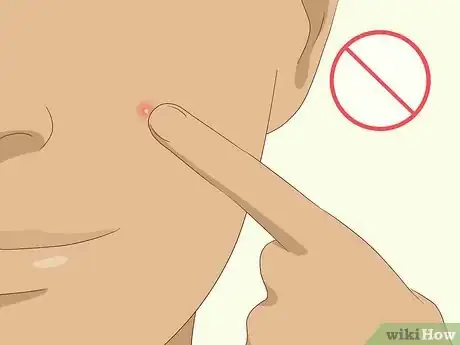
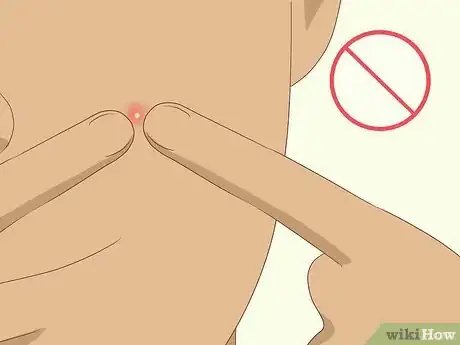


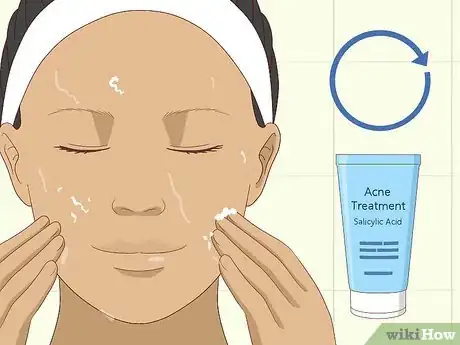

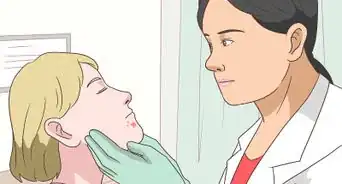
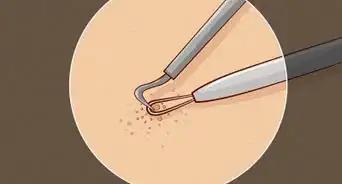
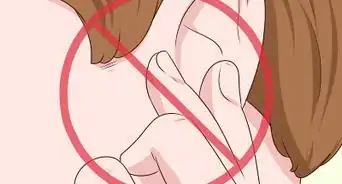

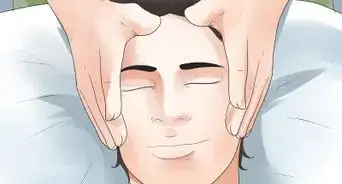
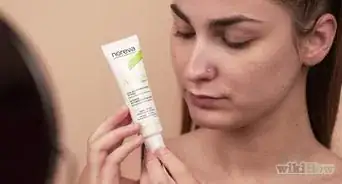
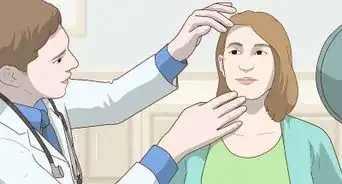

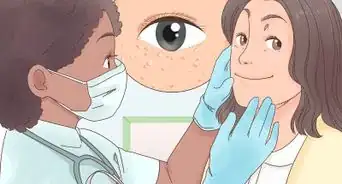
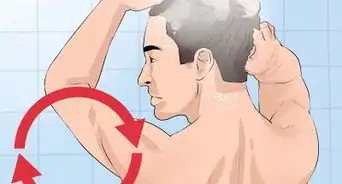
-Step-9.webp)









